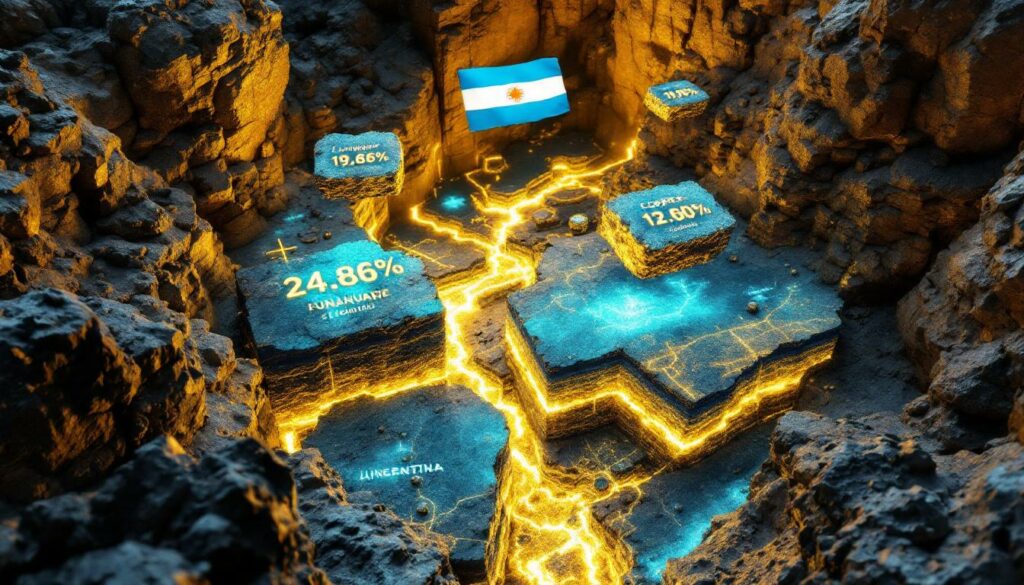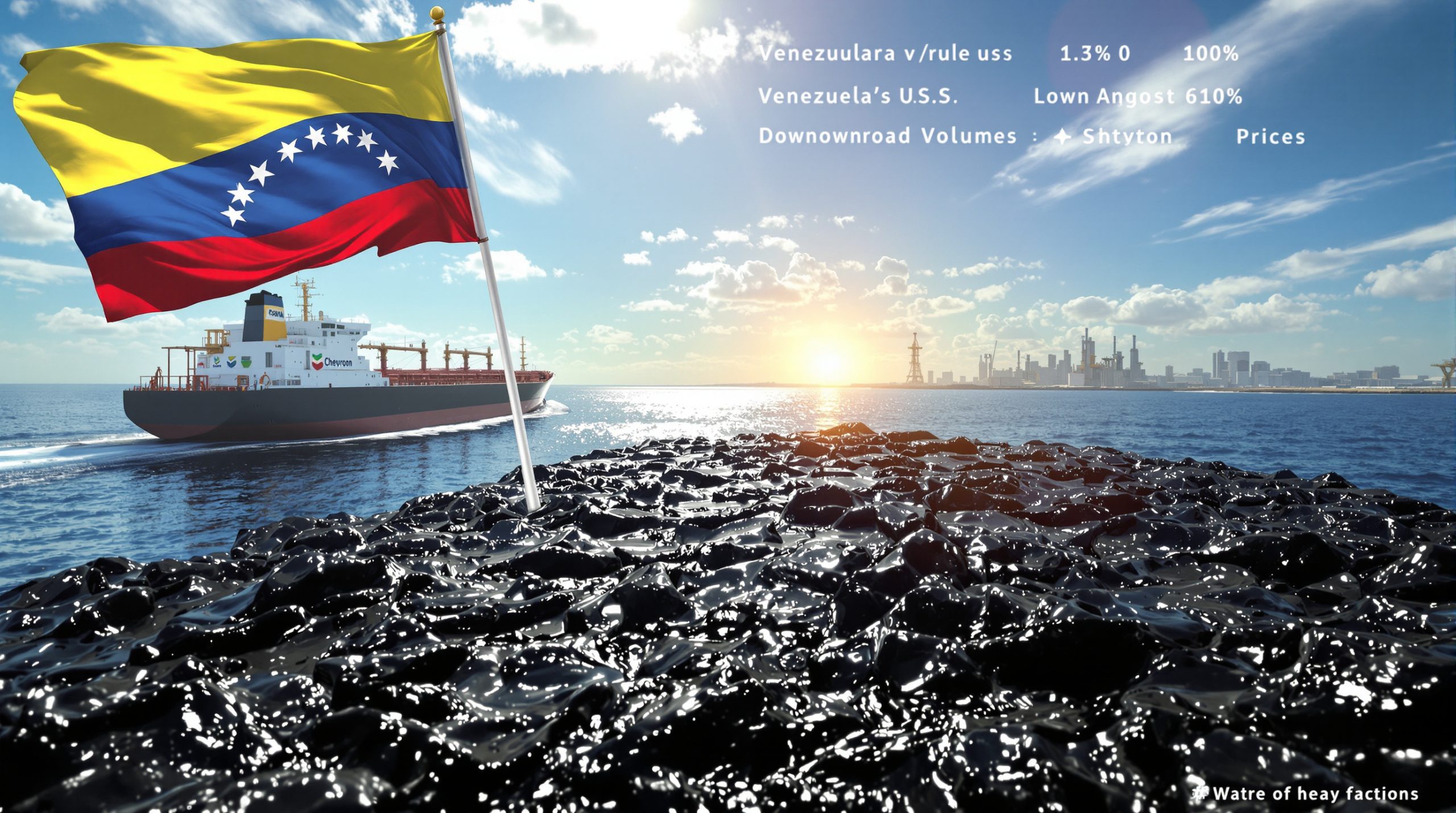Promising Drilling Results at Lunahuasi Copper-Gold Project: What Investors Need to Know
What is the Lunahuasi Copper-Gold Project?
The Lunahuasi Copper-Gold Project stands as a promising mineral development in San Juan Province, Argentina. Operated by NGEx Minerals Ltd., this project represents a significant future-focused mining opportunity in South America's emerging resource sector. The site hosts a multi-metal deposit containing impressive concentrations of copper, gold, and silver, positioning it as a potentially valuable asset in Argentina's developing mining district.
NGEx Minerals has strategically acquired and developed this property within a region increasingly recognized for its mineral exploration importance. The company's exploration activities have systematically expanded understanding of the deposit since initial discovery, with each phase of drilling revealing more about the property's considerable resource potential.
Project Overview and Location
Located in the mineral-rich San Juan Province of Argentina, the Lunahuasi Project benefits from a strategic position within the country's expanding mining corridor. This region has gained attention from major mining companies in recent years due to its favorable geology and improving infrastructure.
The project site is situated in an area known for its porphyry-style mineralization, a geological formation often associated with large-scale copper and gold deposits worldwide. San Juan Province offers reasonable access to transportation networks, power infrastructure, and skilled mining labor, all critical factors for potential future development.
NGEx Minerals Ltd., as the project operator, brings substantial experience in South American resource development, having previously advanced similar projects through exploration and into development stages.
Geological Significance
The Lunahuasi deposit features a complex porphyry mineralization system, characterized by extensive copper-gold-silver mineralization distributed across multiple zones. Porphyry deposits typically represent large-volume, low to medium-grade ore bodies that form the backbone of global copper production.
What distinguishes Lunahuasi from many similar systems is the presence of multiple high-grade zones within the broader mineralized envelope. This geological configuration offers potential flexibility in mining approaches, potentially allowing for targeted extraction of higher-value material during initial production phases.
Recent drilling has significantly enhanced understanding of the deposit's structure, revealing substantial vertical continuity of mineralization that extends from near-surface to depths exceeding 600 meters. This vertical extent suggests considerable resource expansion potential beyond currently defined boundaries.
The project's geological significance extends beyond its immediate economic potential, as it contributes valuable data to the broader understanding of mineralization patterns in this emerging district of Argentina. Each drilling program has refined the geological model, identifying new ore zones and expanding known high-grade areas.
What Do the Latest Drilling Results Show?
The recently completed Phase III drilling program at Lunahuasi has delivered exceptional results that substantially enhance the project's potential. Four drill holes from an eight-hole program have been analyzed to date, with each hole intersecting significant mineralization that confirms and extends the high-grade nature of the deposit.
These results demonstrate a consistent pattern of mineralization across multiple depths, with copper equivalent grades ranging from impressive 4.09% to extraordinary 24.86%. The multiple significant intercepts across different drill holes confirm both lateral and vertical resource continuity, significantly de-risking the geological model.
Phase III Drilling Program Highlights
The Phase III drilling program was designed to further delineate known mineralized zones while testing potential extensions. Results from the first four analyzed holes have exceeded expectations, revealing mineralized intercepts that rank among the highest grades reported in recent copper exploration globally.
Key findings include:
- Consistent high-grade mineralization across all reported holes
- Multiple stacked mineralized zones suggesting a robust geological system
- Verification of the geological model's predictions regarding ore body continuity
- Extension of known high-grade zones beyond previously defined boundaries
- Discovery of new mineralized zones requiring further investigation
The drilling program utilized modern directional drilling techniques to accurately target predicted mineralized zones, with each hole providing valuable data that will be incorporated into an updated resource model.
Drill Hole DPDH041 Results
Drill hole DPDH041 revealed multiple mineralized intervals across different depths, confirming the vertical extent of the deposit:
- 8.30-meter intersection at 266.7m depth with 12.38% copper equivalent
- 89.10-meter intersection at 581.9m depth with 4.09% copper equivalent
- Higher-grade zone of 38.10 meters at 605.4m depth with 7.07% copper equivalent
This hole successfully demonstrated the vertical continuity of mineralization from relatively shallow depths (266.7m) to much deeper levels (605.4m). Particularly noteworthy is the substantial 89.10-meter interval, which includes a higher-grade core zone, illustrating the deposit's potential for both bulk tonnage mining and potential high-grade selective mining opportunities.
The exceptional 12.38% copper equivalent grade over 8.30 meters represents a concentration of metals significantly above typical economic thresholds for mining operations, highlighting potential high-value zones within the broader deposit.
Drill Hole DPDH042 Results
Drill hole DPDH042 intersected some of the most impressive grades to date at Lunahuasi:
- 48.90-meter intersection at 281.7m depth with 7.75% copper equivalent
- Exceptional 12.55-meter zone at 292.25m depth with 19.05% copper equivalent
- Narrow but extremely high-grade 2.30-meter intersection at 509.1m depth with 23.82% copper equivalent
The results from DPDH042 demonstrate the potential for bonanza-grade zones within the broader deposit. The 19.05% copper equivalent grade over 12.55 meters represents an extraordinary concentration of metals that would be considered exceptional in any mining district globally.
Even more remarkable is the 23.82% copper equivalent grade over 2.30 meters at 509.1m depth. While narrower, such extreme high-grade zones could significantly enhance the overall economics of any future mining operation, potentially providing high-value ore feed during critical periods.
Drill Hole DPDH043 Results
Drill hole DPDH043 delivered what may be the most significant results of the program:
- 46.80-meter intersection at 492.2m depth with 9.55% copper equivalent
- Outstanding 7.00-meter zone starting at 492.2m with 24.86% copper equivalent
The 24.86% copper equivalent grade over 7 meters represents one of the highest-grade intercepts in the project's history and ranks among the most impressive copper price insights reported globally in recent years. Such extraordinary grades, particularly over meaningful widths, indicate potential for exceptional economic returns even in challenging market conditions.
The position of this intercept suggests the potential for additional high-grade discoveries at similar depths elsewhere in the deposit, opening new exploration targets for future drilling campaigns.
Drill Hole DPDH044 Results
Results from drill hole DPDH044 similarly confirmed the high-grade nature of the Lunahuasi deposit, with multiple mineralized intervals demonstrating continuity between previously drilled areas. The consistent pattern of mineralization across all four reported holes significantly enhances confidence in the geological model and the potential resource base.
"These drilling results have confirmed and extended known high-grade ore zones, enhanced the understanding of the porphyry mineralization system, and discovered new ore zones," stated NGEx Minerals in its official release.
How Do These Results Compare to Industry Standards?
The drilling results from Lunahuasi stand out as exceptional when compared to global copper-gold projects currently in production or development. Industry analysts typically consider copper equivalent grades above 1% as attractive, while grades exceeding 2% are classified as high-grade. In this context, Lunahuasi's multiple intercepts exceeding 7% copper equivalent—and several zones exceeding 20%—place it among the highest-grade undeveloped copper-gold projects globally.
Grade Comparison with Global Copper-Gold Projects
The global average grade for operating copper mines currently stands at approximately 0.6-0.7% copper, with gold typically representing a byproduct credit. Against this backdrop, Lunahuasi's results are remarkable:
- Multiple intersections exceeding 10% copper equivalent (considered exceptional)
- Several bonanza-grade zones exceeding 20% copper equivalent
- Consistent high-grade nature across multiple drill holes
- Grade profile that could potentially rank among the top 1% of undeveloped copper projects globally
These grades significantly exceed typical economic thresholds for mining operations, suggesting potential for robust project economics even under conservative metal price assumptions. The presence of multiple high-grade zones provides optionality for mine planning and potential opportunities to prioritize higher-grade material during initial production phases.
Most operating porphyry copper mines globally operate with grades between 0.3% and 1.0% copper equivalent. Even world-class operations like Escondida in Chile typically process ore grades around 0.8-1.0% copper. Against these benchmarks, Lunahuasi's multiple intercepts exceeding 7% copper equivalent underscore the project's potential significance in the global copper supply landscape.
Thickness and Continuity Analysis
Beyond grade considerations, the substantial width of mineralized intersections at Lunahuasi further enhances its potential economic viability:
- Intersection widths ranging from 2.30 to 89.10 meters provide flexibility for different mining approaches
- Multiple stacked mineralized zones indicating a complex but potentially advantageous system
- Consistent mineralization patterns across drill holes suggesting predictable ore body geometry
- Favorable depth profile with high-grade mineralization from approximately 266m to beyond 600m depth
The combination of exceptional grades and substantial widths creates favorable indicators for potential economic extraction. The vertical continuity demonstrated between intercepts suggests a cohesive mineralized system amenable to efficient mining methods.
Mining engineers typically evaluate the product of grade and thickness as an initial screening tool for deposit quality. By this measure, intersections like 89.10 meters at 4.09% copper equivalent (DPDH041) and 46.80 meters at 9.55% copper equivalent (DPDH043) represent exceptional grade-thickness combinations that would place Lunahuasi among the most attractive development-stage copper projects globally.
What Are the Implications for Project Development?
The exceptional drilling results at Lunahuasi carry significant implications for the project's development trajectory. High-grade discoveries of this magnitude typically accelerate development timelines while potentially improving project economics through various optimization opportunities.
Resource Expansion Potential
The Phase III drilling results have substantially enhanced the resource potential at Lunahuasi:
- New high-grade zones discovered beyond previously known mineralization boundaries
- Enhanced understanding of the porphyry system's extent and geometry
- Potential for significant resource growth in future estimates
- Improved geological model enabling more targeted exploration
The discovery of new ore zones, as highlighted by NGEx Minerals, suggests the mineralized system remains open in multiple directions. This opens opportunities for further resource expansion through additional drilling, potentially increasing the overall size and value of the deposit.
The exceptional grades encountered, particularly in holes DPDH042 and DPDH043, indicate potential for high-grade core zones within the broader mineralized envelope. Such zones could significantly enhance project economics by providing high-value feed during initial production years, potentially accelerating capital payback periods.
The improved understanding of the porphyry mineralization system gained through this drilling program enables more precise interpreting drill results for future exploration efforts. This enhanced geological model increases the probability of success in subsequent drilling campaigns while potentially reducing overall exploration costs.
Development Timeline and Next Steps
Based on the latest drilling results, the project development timeline may accelerate:
- Next phase of drilling scheduled to commence in October 2025
- Opportunity to further expand and define high-grade resources
- Potential acceleration of preliminary economic studies
- Strategic positioning to capitalize on projected copper market supply constraints
The planned October 2025 drilling program will likely focus on further delineating the high-grade zones identified in the Phase III program while testing additional targets generated from the enhanced geological model. This work will provide critical data for resource modeling and eventual mine planning.
The exceptional grades encountered may justify accelerated development timelines, as high-grade deposits typically offer more robust economics across various metal price scenarios. This economic resilience often makes financing more accessible and can expedite investment decisions.
From a strategic perspective, the timing of Lunahuasi's potential development coincides with projected global copper supply constraints. Industry analysts forecast a significant copper supply gap emerging in the late 2020s as electrification trends accelerate and new mine development fails to keep pace with growing demand. High-grade projects like Lunahuasi could command premium valuations in this environment.
How Might These Results Impact Investment Potential?
The exceptional drilling results from Lunahuasi could significantly enhance the project's investment appeal through improved potential economics, reduced development risk, and strategic positioning in an increasingly copper-hungry global market.
Economic Implications of High-Grade Discoveries
The high-grade nature of the Lunahuasi mineralization carries several potential economic advantages:
- Enhanced operating margins: Higher grades typically correlate with lower per-unit production costs, as processing costs remain relatively fixed while metal output increases
- Reduced capital intensity: Higher-grade deposits often require smaller processing facilities for equivalent metal production, potentially reducing initial capital requirements
- Improved project flexibility: The presence of extremely high-grade zones provides optionality in mine planning and sequencing
- Enhanced resilience against commodity price fluctuations: Higher-grade operations typically maintain profitability even during commodity price downturns
The extraordinary grades encountered, particularly zones exceeding 20% copper equivalent, suggest potential for production costs in the lowest quartile of the global cost curve. Such cost positioning would provide substantial margin protection even during challenging commodity price environments.
The economic advantage of high-grade deposits becomes most apparent when considering the relationship between ore grade and recoverable metal value per tonne. For example, a tonne of ore grading 24.86% copper equivalent (as seen in DPDH043) could contain recoverable metal worth approximately 10-15 times more than average-grade porphyry copper ore, dramatically improving the economics of extraction and processing.
Comparison with Similar Stage Projects
When benchmarked against comparable development-stage copper-gold projects, Lunahuasi's exceptional grades provide significant competitive advantages:
- Grade profile exceeds many comparable development-stage projects globally, potentially commanding premium valuation multiples
- Multiple high-grade zones provide operational flexibility not typically available in more homogeneous deposits
- Favorable jurisdiction in mining-friendly San Juan Province, Argentina offers reasonable regulatory environment and established mining code
- Potential for accelerated development timeline due to exceptional economics suggested by drill results
Most development-stage copper projects globally feature grades between 0.3% and 1.0% copper equivalent. Against this backdrop, Lunahuasi's consistent high-grade results potentially position it among the most valuable undeveloped copper assets globally on a per-tonne basis.
The combination of high grades and substantial widths suggests potential for flexible mining approaches, including potential for both bulk mining of the broader mineralized envelope and selective mining of ultra-high-grade zones. This operational flexibility represents a significant advantage compared to more constrained deposits.
From an investment perspective, projects with Lunahuasi's grade profile typically command premium valuations, reflecting their enhanced economics and reduced sensitivity to metal price fluctuations. This premium valuation potential may attract both strategic investors and major mining companies seeking to replenish depleting reserves with high-quality assets.
What Challenges Might the Project Face?
Despite the exceptional drilling results, the Lunahuasi project will likely face various challenges typical of advanced exploration projects transitioning toward development. Understanding these potential hurdles provides a more balanced view of the project's prospects.
Technical Considerations
Several technical factors may present challenges during future development:
- Complex mineralization may require specialized mining approaches: The presence of multiple stacked mineralized zones with variable grades necessitates detailed geological modeling and potentially complex mine sequencing
- Variable grades across the deposit requiring detailed modeling: While high-grade zones present opportunities, effectively managing grade variability requires sophisticated mine planning
- Potential metallurgical complexities with multi-metal recovery: Optimizing recovery of copper, gold, and silver simultaneously may require specialized processing circuits
- Depth considerations for some of the deeper high-grade zones: Mineralization extending beyond 600 meters depth may present geotechnical challenges and increased mining costs
The porphyry-style mineralization at Lunahuasi typically presents moderate metallurgical complexity. While copper recovery from such deposits is generally well-understood, optimizing gold prices analysis and silver recovery can be more challenging, potentially requiring additional processing steps that impact both capital and operating costs.
The depth of some high-grade intercepts (e.g., at 605.4m in DPDH041) suggests that underground mining methods would likely be required for portions of the deposit. Underground development carries higher operating costs compared to open-pit methods, though this is typically offset by the higher grades encountered at depth.
Geotechnical considerations will require detailed study, particularly for the deeper portions of the deposit. Rock competency, potential fault structures, and groundwater conditions all influence mine design and could impact development capital requirements.
Regional Development Factors
Beyond the technical aspects of the deposit itself, several regional factors may influence development:
- Infrastructure requirements in San Juan Province: While Argentina's mining regions have developed infrastructure, project-specific requirements for power, water, and transportation will need detailed assessment
- Water management considerations in semi-arid environment: Mining operations require substantial water resources for processing; securing sustainable water supplies in semi-arid regions presents both technical and permitting challenges
- Community engagement and social license to operate: Successful mine development
Ready to Catch the Next Major Mineral Discovery?
Discover why significant mineral finds like Lunahuasi can lead to substantial investment returns by exploring Discovery Alert's dedicated discoveries page, where our proprietary Discovery IQ model delivers real-time ASX mining alerts to position you ahead of the market.




